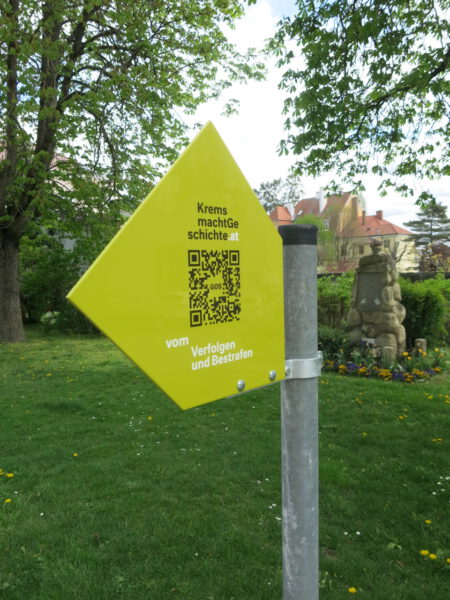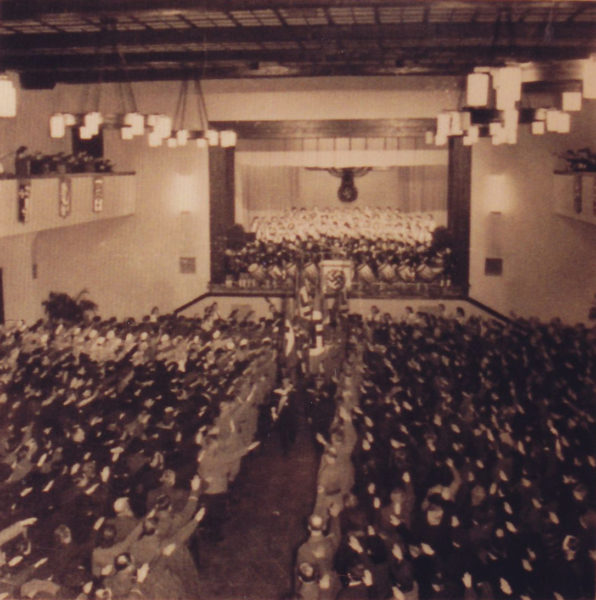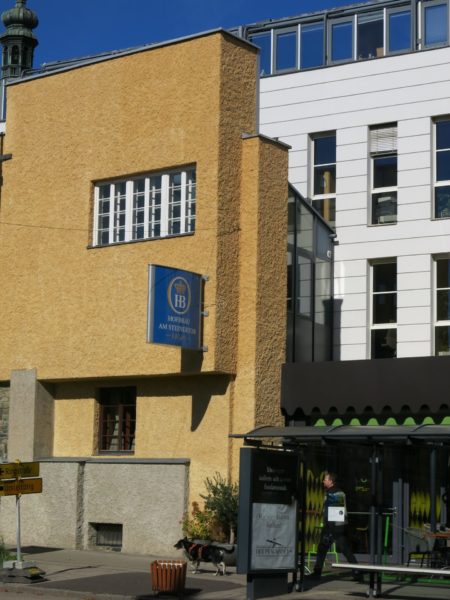After the “Anschluss” of 1938, Krems became the new “Gau capital” of Lower Danube. However, the regional administration was never fully relocated from Vienna to Krems because there was a lack of suitable offices. The only new civil building erected during the period of the Nazi regime was the Brauhof hall.
The reason it was possible to build on this site was itself a consequence of the brutal National Socialist policy of expulsion. A few Jewish families lived in the houses next to the Steiner Gate, outside the city walls. By September 1938 they had been forced to leave the city. There was now nothing to stop these buildings being summarily demolished. In November 1940 the Brauhof hall was ceremonially opened. Now the NSDAP could bring together the residents of the city for large-scale rallies. In addition to party events there were also concerts, lectures and theatrical performances. Later the aid agency Winterhilfswerk collected woollen mittens, underwear and skis here for soldiers on the Eastern Front. In the final conscription drive of the National Socialist war effort, the Volkssturm was sworn in here in 1945.
After the end of the war, cultural life began with concerts organised by the Soviet military, operas and boxing matches. It was a venue for celebrations by high-school graduates as well as the Vienna-based Association of Stalingrad Fighters. The Brauhof hall remained the only large meeting space in the city. It was in regular use until well into the 1990s and is a place of positive memories for generations of Krems people.
In 1993 the Brauhof hall was demolished. The site was needed for a large shopping centre.




